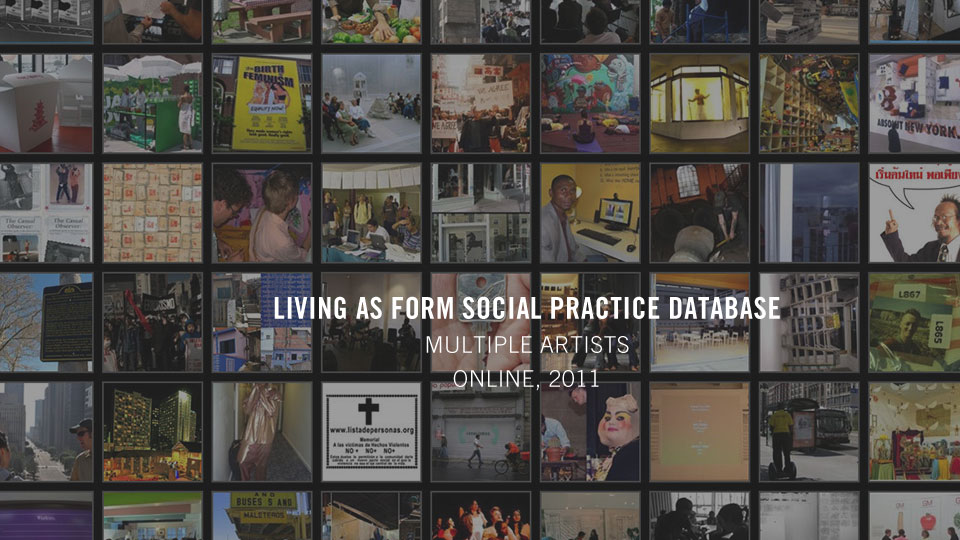social practice as ‘expanded field’ or ‘excluded field’
This blog post is explores elements of my doctoral research exploring the question of whether participatory art can support sustainable social change. It’s taken from some of the writing in the introduction to my second draft literature review…
Click the image above to see a database of more than 350 socially engaged arts projects.
Participatory art is said by many to be a growing field. As a practice, it adopts numerous forms and crosses many boundaries. Participatory art is often, but not always, implicated in narratives surrounding personal and social change, either directly through public policy, or indirectly through the statements of individual socially engaged artists. Socially engaged art interventions are often short-term and limited in scope and scale. This leads to questions about whether such approaches should or can be sustained. It also leads to an expanded field in which participatory art may be increasingly separate from social practice. (This is a BIG question which I will discuss in later posts.)
My starting point here is Creative Time’s Chief Curator and important influencer of US social practice, Nato Thompson’s declaration in Living as Form that socially engaged art ‘is growing and ubiquitous’ (Thompson, 2012, p. 19). But does this statement really reflect the history of this field of practice? If socially engaged art is, as Thompson claims, ‘growing’, in what ways, and to what and whose agendas? Is it really ‘ubiquitous’? Many practitioners in the field may well think otherwise. My literature review attempts to unpick chronologically, from the early 1980s onwards, whether socially engaged art is now virtually omnipresent within today’s art world as Thompson suggests.
The cross-disciplinary nature of socially engaged art and the individual experiences of participants and artists means that the field is hotly debated by policy-makers, critics, academics and large arts institutions. Artists, art workers and smaller collectives and organisations are often disenfranchised and, perhaps as a result, disinterested by attempts to investigate, document, define, regulate and even contest the field.
Researching the practice necessarily involves traversing a myriad of complementary and conflicting areas and perspectives. Questions revolve around aesthetics, instrumentalism, independence, community, place-making, economics, politics, policy, cultural value, evaluating and evidencing impact, outcomes for participants and society, individual experience, integration and sustainability. How does socially engaged art interface with and and reflect upon other disciplines such as sociology, pedagogy, education, health and wellbeing, psychology, regeneration, development, and ethnography? Can a further ‘expanded field’ that encompasses critical theory, participatory action research, notions of the carnivalesque, post-development theory, permaculture, and more, lead to fruitful routes to new insights about the nature of socially engaged art and its potential for alternative forms of meaningful individual and social change?
All of this is important for social practice. It can help to positively (re)define social practice – perhaps raise it’s profile in the arts. It can also provide a mechanism for those wishing to regulate and professionalise the practice. Research can also help maintain, even expand, independent practice, activism and radicalism – forming new ways for individual practitioners to work together to resist attempts to institutionalise the field (or certain elements within the ‘expanded field’). Nonetheless, research (mine very much included) can exclude the very artists, practitioners, workers and small/ embryonic organisations that form the heart of the field of social practice. It can also exclude participants and audiences. This is something I am keen to try to address. I do not really know how to avoid exclusion but I think I know exclusion when I see it…
